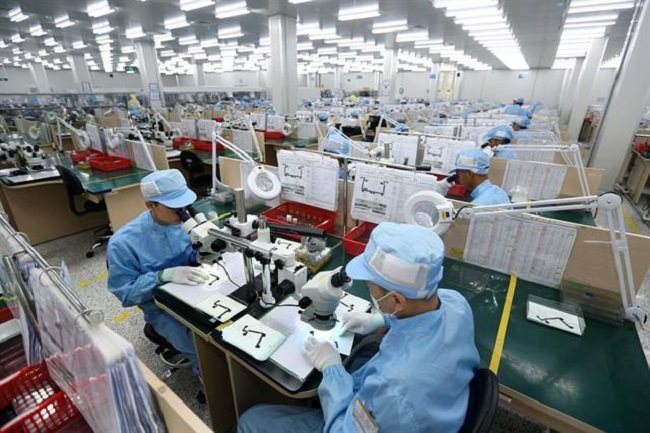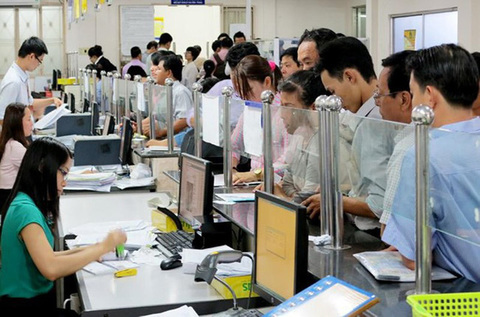A closer look at Vietnam’s GDP
A closer look at Vietnam’s GDP
The growth of gross domestic product (GDP) should not be relied on calculation methods but on real increases in accordance with growth models which best suit economies on a case-by-case basis
The General Statistics Office (GSO) has completed a new way of GDP calculation and is about to unveil it. The new calculation method is expected to raise Vietnam’s GDP per capita to some US$3,000 per year (2018), a jump of 15.8% from the current official figure. It is likely that the new GDP computation will take into account the informal or underground economy. If this is the case, the results it produces should only be considered as an extra reference source, because officially, the principle of GDP calculation established by the System of National Accounts (SNA) in accordance with United Nations standards cannot be changed at will, and it is far from simple for such data to garner the recognition from international organizations like the International Monetary Fund (IMF) and the World Bank (WB).
According to the WB(1), the informal sector takes up about one-third of GDP and two-thirds of the labor force in developing countries. In addition to job mobility as a positive point, economies with a large share of the informal sector are often associated with low labor productivity, tax losses, corruption, poverty and income inequality.
Many countries around the world are trying and determined to gradually make the informal sector formal, in an attempt to better apprehend the true of their respective economies. However, for some of them, this is a dilemma, because to achieve such goal, it is compulsory to pay special attention to corruption fight, improve state management efficiency and adopt appropriate economic policies.
Vietnam has long been interested in gradually converting the informal economy. As per some studies, the informal sector accounts for some 15-27% of GDP(2). Earlier this year, the Prime Minister brought up this issue in his meeting with the IMF Resident Representative in Vietnam, looking forward to receiving the assistance from the IMF in order to keep track of the contribution of the informal sector so that it could be factored in to official statistics. Undertaking the project “Statistics on Unobserved Economy,” the GSO will put into practice a yardstick on a pilot basis this year and make it an official norm from 2020 onwards.
Therefore, it is very likely that the informal economy will be part of the GSO’s new method of GDP calculation. The GSO, however, has not revealed how the computation will be carried out as an array of different methods is available of calculating or estimating the of the informal sector.
Data record on informal economy not an easy task
The calculation and estimation of the of the informal sector is done in almost all countries to approximate the strength of their respective economies, and formulate appropriate policies. However, the statistical principle laid down by the SNA does not include the contribution of this sector in official GDP. To obtain recognition, there is no choice than to gradually make the informal economy formal with a roadmap and solutions in line with the conditions of each economy.
In late 2018, Egypt whose informal sector makes up about 40-50% of GDP asked for the permission of the WB and the IMF to take the informal sector into account during GDP calculation, but the answer seemed there was probably no exception. Then, the Egyptian government urgently drafted a bill to bring micro-enterprises, small and medium enterprises under its control, and invited the IMF representatives over for consultation.
Still, the biggest obstacle to the conversion of the informal sector in Egypt as well as many other countries lies in the fight against corruption, the effectiveness of law enforcement, and appropriate supporting policies. As far as Egypt is concerned, even the proposal for exemption from all types of taxes and fees within five years for individuals, production and business establishments so that they can apply for business registration may not be enough to entice a part of the population involved, who argue that they will still have to start paying taxes after five years, meaning the prices will go up and thus reduce the purchasing power of buyers of their products or their services (mostly the poor).
However, from another perspective, corruption and poor law enforcement have discouraged another part of the population from making their production and business activities formal. The complicated and overlapping rules keep them from acquiring an official business license or make law violation easier. The ambiguous penalties or indefinite bribes are sometimes greater than the sum of taxes or fees they have to pay when operating formally.
Every government wants to increase the of their official GDP, since this is an obvious manifestation of prosperity and comes with many other benefits, the way many macroeconomic indicators are associated with GDP. That said, today, many have argued that GDP is not the only goal that should be met at all costs. What matters is how people enjoy greater practical benefits from greater GDP. If the GSO modifies the GDP calculation method only to incorporate the informal sector to make the country’s GDP more admirable, then the numbers worked out this way should be treated just as a reference. Only when the informal economy is made formal will Vietnam’s GDP be reflected more faithfully and recognized internationally.
Moreover, the increase in GDP should not be based on a change in calculation, but rather on real growth forces, depending on the growth paradigm of each economy. All economies with sustainable growth and benefits for their people focus on R&D (research and development), education, health, and the environment.





















